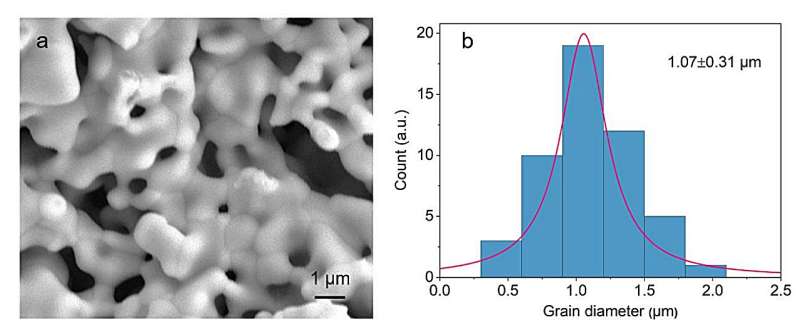January 24, 2024 report
This article has been reviewed according to Science X's editorial process and policies. Editors have highlighted the following attributes while ensuring the content's credibility:
fact-checked
peer-reviewed publication
trusted source
proofread
Scientists announce breakthrough in hypersonic heat shield

In a giant leap for future hypersonic flight, Chinese scientists have turned to multi-scale technology to develop a revolutionary new material that has achieved record high marks in tests for vital strength and thermal insulation properties.
The scientists say their porous ceramic creation opens the door to wider exploration in the fields of aerospace, chemical engineering and energy transfer and production.
"For the first time, it is reported a multi-scale structure design and fast fabrication of … high-entropy ceramics via an ultrafast high-temperature synthesis technique that can lead to exceptional mechanical load-bearing capability and high thermal insulation performance," the researchers said in a paper published Jan. 2 in the journal Advanced Materials.
Scientists have long faced challenges in developing strong, lightweight materials boasting low-thermal conductivity that are critical, especially for hypersonic travel. Ceramic materials offer promise because they exhibit low thermal conductivity, high melting points and corrosion resistance, and they are also non-combustible.
But exploration projects at great depths below the Earth's surface as well as in outer space encounter extremely high temperatures and pressure. Traditional ceramic materials are insufficient in those instances.
Lightweight, porous materials offered low thermal transfer but that desirable property often came with a tradeoff—greater fragility.
In their report, "Ultrastrong and High Thermal Insulating Porous High-Entropy Ceramics up to 2000 °C," researchers at Guangzhou University School of Materials Science and Engineering stated, "It is imperative to find ways to simultaneously improve the mechanical strength and thermal insulation capacity of porous ceramics."
So they turned to the concept of high-entropy design to come up with a porous ceramic material that achieved a good balance between strength and heat resistance without the usual downsides.
High-entropy design focuses on the use of equal measures of multiple elements that can be used to create stronger, more heat-resistant and more stable components.
The researchers developed a material that achieved the demanding insulation and weight criteria for aerospace flight. Their new ceramic creation, which goes by the unassuming name 9PHEB—9-cation porous high-entropy diboride—provides "exceptional thermal stability" and "ultrahigh compressive strength," the researchers said.
"High-quality interfaces, characterized by strong bonding without defects or amorphous phases, can promote the rapid force transfer along the building block and to many other ones through connections upon loading, leading to a significant enhancement of mechanical strength," the report said.
Aerospace mishaps due to heat and stress have made headlines over the years.
The Challenger tragedy in 1986 was attributed to rubber O-rings that formed a seal between rocket boosters. Losing their pliability in cool temperatures, they were restricted to use only in temperatures above 53 degrees. The Challenger was launched, however, with temperatures dipping to 36 degrees. The O-rings lost their elasticity, failed, and explosive gases leaked and led to the catastrophic explosion that killed all seven astronauts.
A second shuttle disaster occurred 17 years later when foam insulation broke from the Space Shuttle Columbia's external tank and struck thermal protection tiles leading to a compromise on the internal wing heat shield, resulting in the shuttle's disintegration and deaths of all seven astronauts aboard.
The researchers say their new material holds promise for advances in aerospace exploration.
"The excellent mechanical and thermal insulating properties [of 9PHEB] offer an attractive material for reliable thermal insulation under extreme conditions," they explained.
More information: Zihao Wen et al, Ultrastrong and High Thermal Insulating Porous High‐Entropy Ceramics up to 2000 °C, Advanced Materials (2024). DOI: 10.1002/adma.202311870
© 2024 Science X Network




















